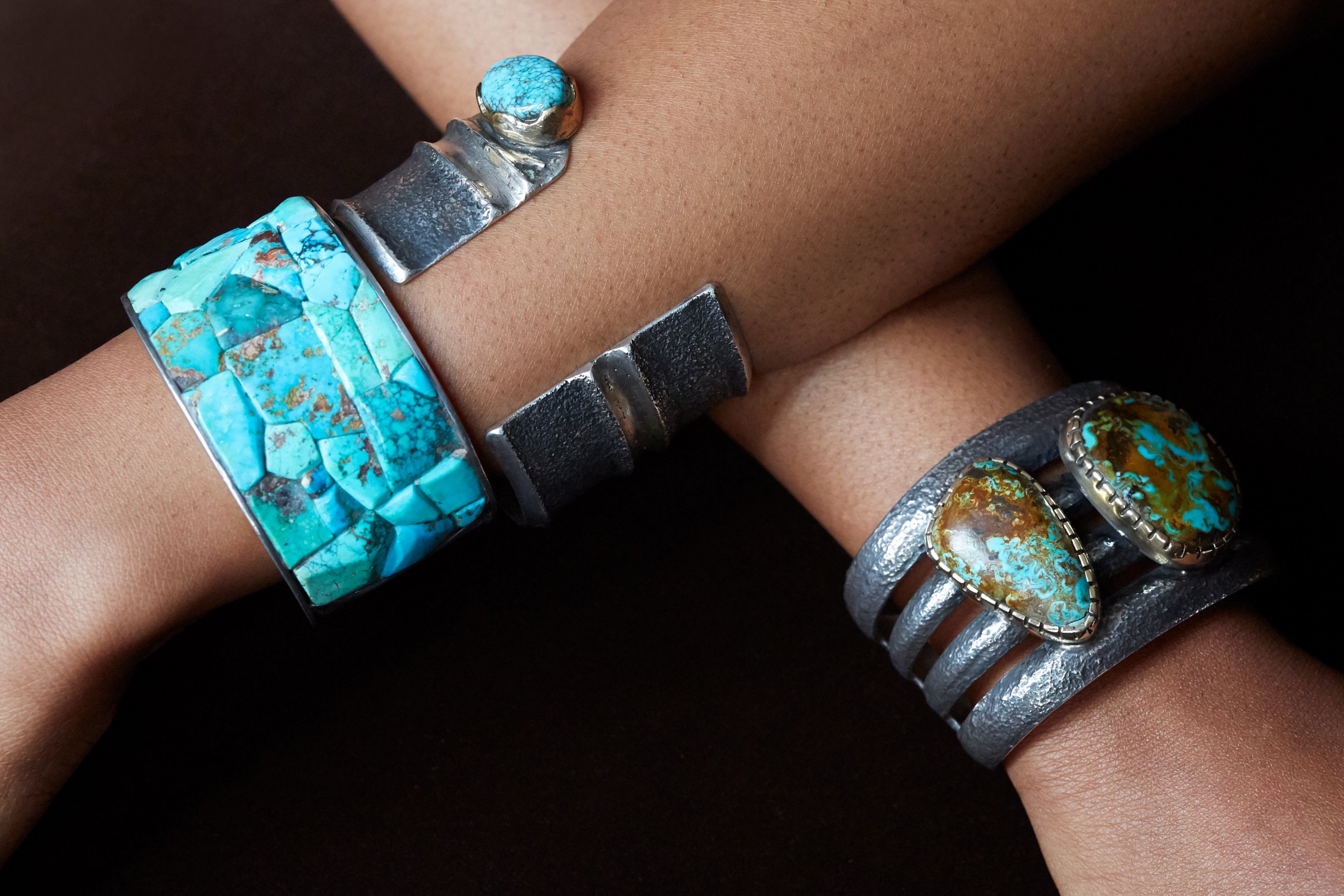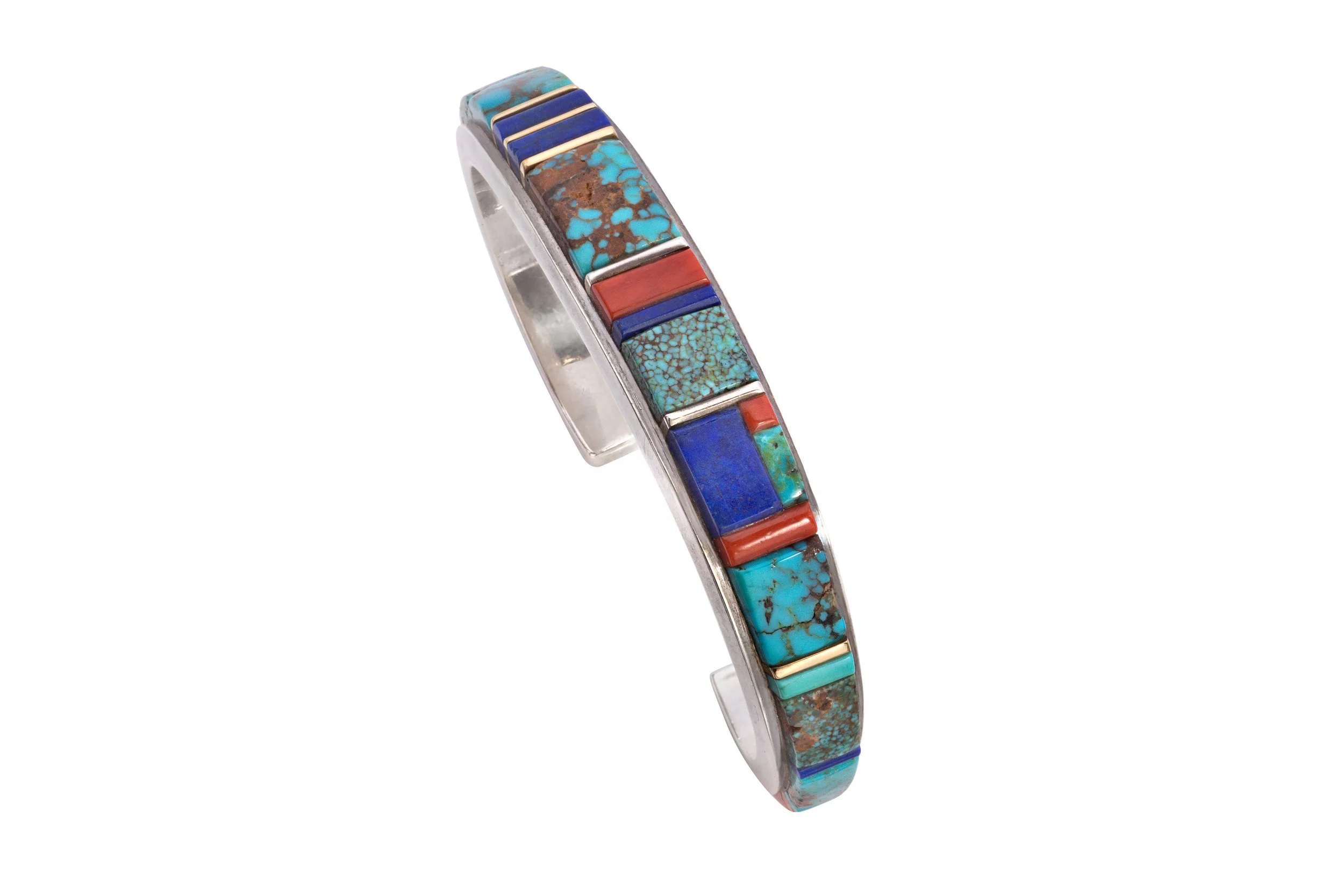CHARLES LOLOMA (Hopi, 1921-1991)
Charles Loloma was the preeminent Native American artist and master jeweler of the twentieth century. His birthplace of Hotevilla on Third Mesa of the Hopi Reservation served as both his home and studio and played an integral part in his work.
Loloma’s path, like his work, was not linear. Interested in the arts from a young age—both of his parents were respected craftspeople in the community—Loloma assisted the famous muralist Fred Kabotie with a series of murals for San Francisco’s Golden Gate International Exposition in 1939 and for the Museum of Modern Art’s historic exhibition Indian Art of the United States, in New York, 1941. From 1941 to 1945, Loloma served in the Army, and the GI Bill afforded him the opportunity to study at the School for American Craftsmen at Alfred University in New York. It was here that he fell in love with ceramics and developed a style unique to him. Upon graduation, he opened a pottery shop, where he made Lolomaware with his wife, in Scottsdale, Arizona, at the Kiva Craft Center. However, his artistic pursuits led him to jewelry in the mid-1950s.
Initially Loloma’s jewelry was criticized for being not “Indian” enough, specifically in his choice of materials. Loloma included turquoise and silver in his jewelry but also gold, lapis lazuli, malachite, fossil ironwood, and ivory. This dichotomy proved to be both groundbreaking and, at times, challenging. He was also a master of tufa casting and used lost-wax techniques that he learned from studio jewelers in California like Bob Winston and Fred Skaggs. Loloma was also passionate about color and texture, combining both in his inlay bracelets. The heights and the depths of his stone cuts were inspired by the landscape of the mesas. It is not surprising that Loloma’s name means “many beautiful colors.”
In the mid-1960s, Loloma established his reputation as one of the country’s leading artist-jewelers. He was commissioned by Lady Bird Johnson to create pieces for the president to gift to the Queen of Denmark and Imelda Marcos. However, no matter the Rolls Royce, the private plane, or the celebrity friends, Loloma remained true to his heritage. He was a Hopi spiritual leader—a member of the Badger Clan, and a Hopi snake priest. He used Hopi symbols and forms in his work and took care of the fields of melon, squash, and corn.
Loloma passed away in 1991. In 2005, the Wheelwright Museum in Santa Fe opened, under guest curator Martha Hopkins Struever, a 466-object Loloma retrospective, Loloma: Beauty Is His Name. His jewelry and artwork live on in important private collections as well as major public institutions, including the Heard Museum, Phoenix; the Wheelwright Museum, Santa Fe; the American Museum of Natural History, New York; and the Philbrook Museum of Art, Tulsa.
To learn more about Charles Loloma, visit our Native American Collection page to see jewelry from our inventory of exquisite Native American jewelry and purchase the catalog Material Beauty: Modern Hopi, Navajo, and Pueblo Artist Jewelers, which accompanied our 2018 exhibition here.









